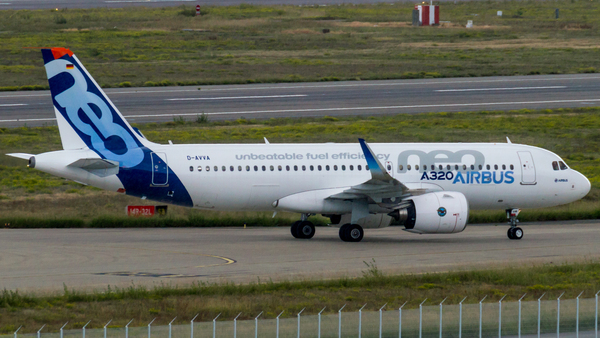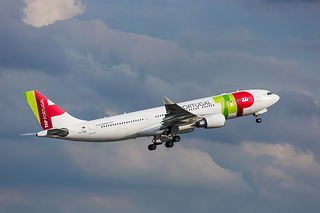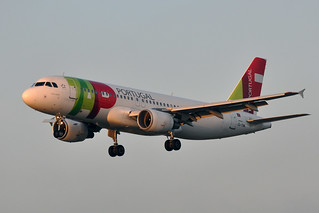TAP A343 at Rio de Janeiro on Dec 8th 2011, overran runway on takeoff and continued to Lisbon
Last Update: October 17, 2018 / 18:42:30 GMT/Zulu time
Incident Facts
Date of incident
Dec 8, 2011
Classification
Report
Airline
TAP Air Portugal
Flight number
TP-74
Departure
Rio de Janeiro Galeao, Brazil
Destination
Lisbon, Portugal
Aircraft Registration
CS-TOD
Aircraft Type
Airbus A340-300
ICAO Type Designator
A343
Airport ICAO Code
SBGL
A post flight inspection of CS-TOD revealed an approach light (ALS lamp) embedded in the right hand main gear of the aircraft, the aircraft sustained minor damage.
Portugese Authorities informed Brasilian Authorities, a runway inspection was conducted on Dec 9th 2011 at 15:55L (17:55Z), during the inspection evidence was found suggesting the aircraft overran the end of the runway, contacted the ALS approach lights runway 28 and the localizer antenna runway 10.
Brazil's CENIPA released their final report in Portugese (editorial note: the occurrence page also offers a link to the English version of the report which however results in a page not found error message (an inquiry with CENIPA has been transmitted, hence this summary and translation is compiled from the Portugese version of the report) concluding the probable causes of the serious incident were:
airport infrastructure related
Works at the airfield resulted in the threshold of runway 10 being displaced reducing the takeoff distance available to 2730 meters. The existing alerts (NOTAMs and ATIS) were insufficient to prevent the incident because they did not offer guidance which taxiways should have been used by large aircraft. The sharp angle between taxiways AA and BB did not permit large aircraft taxiing on BB to enter taxiway AA which would have provided direct access to the displaced threshold.
flight planning related
Although the information is available in the aerodrome charts, there was inadequate familiarization regarding the precise location of the displaced threshold, taxiways and location of the works leading the crew to accept their taxi clearance without challenging or requesting a change. In addition the crew did not recognize their incorrect position when they lined up for departure.
Management planning related
The materials provided by TAP Portugal to compute takeoff performance and prepare for flight did not favour situational consciousness by the crew because they did not contain accurate information about the displaced threshold.
Managerial supervision
The operational agreement letter between the airport operator and DGCA contained the standard taxi routes to be used by aircraft to reach the displaced threshold including a preferred and an alternate route. The lack of a more specific criterion, e.g. which aircraft types would need to use the alternate route, may have mislead the controllers to clear the A340 for a taxi route, that was not suitable for its size.
Use of phraseology
Although the information about the displaced threshold was provided to pilots via NOTAMs and ATIS and despite the fact that the requirement to familiarize with the aerodrome is with the flight crew, the lack of phraseology with clear information about the location of the displaced threshold and lack of information about the best taxi routes to reach the displaced threshold may have mislead the pilots to accept the incorrect position for takeoff.
CENIPA reported the captain (14,000+ hours total, 700 hours on type) was pilot monitoring, the first officer (6,000+ hours total, 900 hours on type) was pilot flying.
The crew prepared their takeoff calculations based on the available information from the NOTAMs, using the takeoff distance available of 2730 meters. The first officer thus prepared a flex takeoff setting with an assumed temperature of 34 degrees C, the captain cross checked and put the performance data into the FMS.
The crew was cleared to taxi to runway 10 via taxiways EE, M, T and BB. The captain taxied the aircraft onto the runway. The crew reported that while taxiing along taxiway BB they did notice taxiway AA crossing and spotted an X on it, thus they believed the displaced threshold was at the intersection with taxiway BB and continued on BB onto the runway. The captain then handed the controls to the first officer who commenced immediate takeoff. Acceleration was normal, however, during the last 3 or 4 seconds of the takeoff roll both crew noticed some increased vibration, however, as the aircraft maintained a normal attitude they attributed the vibrations to an irregular pavement. After rotation and becoming airborne the crew received a temperature alert for the right main gear and left the gear down for a while to permit the gear to cool down. The remainder of the flight to Lisbon was uneventful.
CENIPA analysed that verification of the takeoff computation by Airbus confirmed there was no error in the crew computations. The aircraft was also correctly configured to match that computed takeoff performance. In addition, the crew performed a rolling takeoff which reduced the takeoff distance required to become airborne. The vibrations reported by the crew during the last 3 or 4 seconds of the takeoff run were caused by the aircraft running over ground past the runway end, however, the crew remained unaware of having run beyond the end of the runway because they had already begun rotation and had lost sight of the ground. None of the theories, like takeoff performance calculation error, were thus able to explain the runway excursion.
After listening to the ATC tapes the investigtion commission began to consider another scenario, that the aircraft had continued on taxiway BB to the runway and thus commenced their rolling takeoff abou 600 meters past the displaced threshold leaving just 2095 meters of takeoff distance available.
The preferred taxiroute to the holding point displaced threshold runway 10 was via taxiway N, BB and AA, the alternate taxi route, that should have been used by the A340, was via taxiway N and AA. One of the factors that may have invoked the taxi clearance via M, BB and AA may have been, that by definition the alternate route was to be used only for "large aircraft" without any further detail.
Had a longer runway been necessary the controller would have offered runway 15 for departure.
The crew was not certain about whether they would have needed to taxi to the holding point displaced threshold runway 10 via taxiway BB or taxiway AA suggesting the crew was not sufficiently familiar with the aerodrome layout. However, although the NOTAMs indicated the first 1270 meters of runway 10 were closed, there was no additional information, e.g. which taxiway was to be used to use the full remaining length of the runway, in this case taxiway AA. A more complete and elaborate text of the NOTAM would have increased the situational awareness of the crew. In addition, the tables provided by TAP to compute takeoff performance also did not indicate where the displaced threshold was actually located and which taxiways should be used to begin the departure roll at the displaced threshold. Following the incident TAP provided their crews with sketches showing the correct taxi route to runway 10.
The taxi clearance was issued via taxiway EE, M, T and BB, no further information was provided. The crew remained unaware that by following that taxi clearance they would enter the runway 600 meters past the displaced threshold. In addition, it would have been impossible for the A340 to join taxiway AA from taxiway BB due to the sharp angle.
Overall, the crew prepared for a takeoff using 2730 meters takeoff distance required when following their taxi route only 2095 meters takeoff distance were available.
Computations by Airbus showed that from entering the runway via taxiway BB no flex takeoff was possible, not even maximum takeoff thrust would not have sufficient to become airborne within the 2095 meters available. Therefore the wrong positioning onto the runway was decisive for the incident.
The impact marks beyond the stopway, about 200 meters past the runway end, as well as the impact marks on the localizer antenna 360 meters past the runway end suggest, that had the takeoff begun 600 meters earlier, the takeoff would have been without incident.
Related NOTAMs:
K2094/11 NOTAMN
Q) SBCW/QMRLC/IV/NBO/A/000/999/2249S04315W005
A) SBGL
B) 1110310200 C) 1201120300
E) RWY 10 FST 1270M CLSD DUE TO WIP
K2095/11 NOTAMN
Q) SBCW/QMDCH/IV/NBO/A/000/999/2249S04315W005
A) SBGL
B) 1110310200 C) 1201120300
E) DECLARED DIST CHANGED TO:
TORA TODA ASDA LDA
RWY 10 2730M 2730M 2790M 2730M
RWY 28 2730M 2730M 2730M 2730M
Metars:
SBGL 050100Z 10009KT 9999 FEW015 SCT050 23/18 Q1015=
SBGL 050000Z 11009KT 9999 FEW015 BKN040 23/19 Q1014=
SBGL 042300Z 12010KT 9999 FEW040 SCT100 23/18 Q1014=
SBGL 042200Z 10010KT 9999 FEW020 SCT040 24/18 Q1013=
SBGL 042100Z 08012KT 9999 SCT025 25/18 Q1013=
SBGL 042000Z 13012KT 9999 SCT025 25/18 Q1012=
SBGL 041900Z 13011KT 9999 FEW020 26/19 Q1012=
SBGL 041800Z 13011KT 9999 FEW020 26/19 Q1013=
Incident Facts
Date of incident
Dec 8, 2011
Classification
Report
Airline
TAP Air Portugal
Flight number
TP-74
Departure
Rio de Janeiro Galeao, Brazil
Destination
Lisbon, Portugal
Aircraft Registration
CS-TOD
Aircraft Type
Airbus A340-300
ICAO Type Designator
A343
Airport ICAO Code
SBGL
This article is published under license from Avherald.com. © of text by Avherald.com.
Article source
You can read 2 more free articles without a subscription.
Subscribe now and continue reading without any limits!
Read unlimited articles and receive our daily update briefing. Gain better insights into what is happening in commercial aviation safety.
Send tip
Support AeroInside by sending a small tip amount.
Related articles
TAP A20N at Lisbon on Nov 14th 2025, lightning strike
A TAP Air Portugal Airbus A320-200N, registration CS-TVP performing flight TP-862 from Lisbon (Portugal) to Venice (Italy), was climbing out of…
TAP A20N at Madrid on Oct 14th 2025, fumes in cockpit and cabin
A TAP Air Portugal Airbus A320-200N, registration CS-TVL performing flight TP-1023 from Madrid,SP (Spain) to Lisbon (Portugal), was climbing out of…
TAP A21N over Atlantic on May 26th 2025, fumes on board
A TAP Air Portugal Airbus A321-200N, registration CS-TXA performing flight TP-211 from Porto (Portugal) to Newark,NJ (USA), was enroute at FL340 over…
TAP A332 at Lisbon on May 23rd 2025, hydraulic failure
A TAP Air Portugal Airbus A330-200, registration CS-TOO performing flight TP-204 (dep May 22nd) from Newark,NJ (USA) to Lisbon (Portugal), was…
TAP A320 at Porto on Apr 16th 2025, smoke in cockpit
A TAP Air Portugal Airbus A320-200, registration CS-TNK performing flight TP-687 from Luxembourg (Luxembourg) to Porto (Portugal), was descending…
Newest articles
Hokkaido AT42 at Sapporo on Dec 11th 2025, engine shut down in flight, temporary loss of thrust on the other
A Hokkaido Air Systems Avions de Transport Regional ATR-42-600 on behalf of JAL Japan Airlines, registration JA14HC performing flight JL-2823 from…
Skymark B738 at Sapporo on Nov 1st 2025, lightning strike
A Skymark Airlines Boeing 737-800, registration JA737X performing flight BC-705 from Tokyo Haneda to Sapporo (Japan), was descending towards Sapporo…
Subscribe today
Are you researching aviation incidents? Get access to AeroInside Insights, unlimited read access and receive the daily newsletter.
Pick your plan and subscribePartner

ELITE Simulation Solutions is a leading global provider of Flight Simulation Training Devices, IFR training software as well as flight controls and related services. Find out more.
SafetyScan Pro provides streamlined access to thousands of aviation accident reports. Tailored for your safety management efforts. Book your demo today
AeroInside Blog
Popular aircraft
Airbus A320Boeing 737-800
Boeing 737-800 MAX
Popular airlines
American AirlinesUnited
Delta
Air Canada
Lufthansa
British Airways





